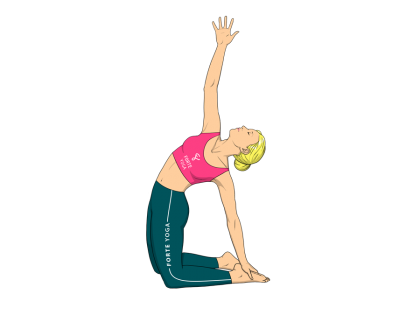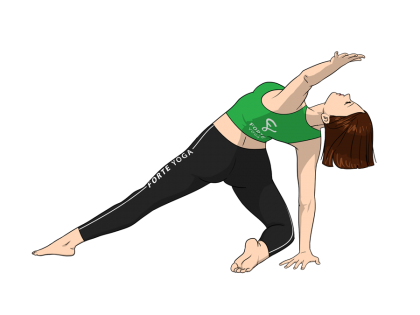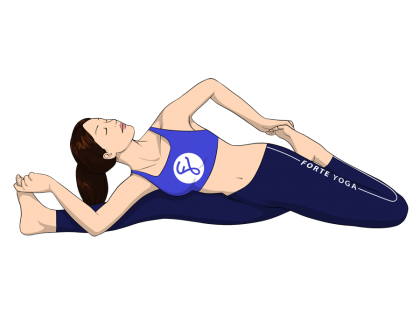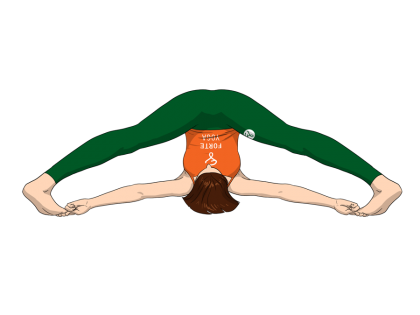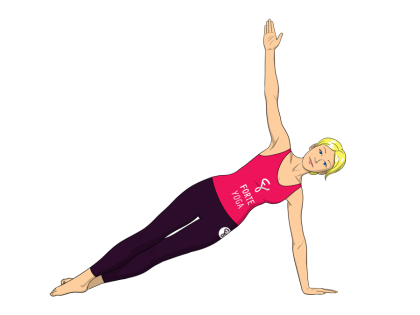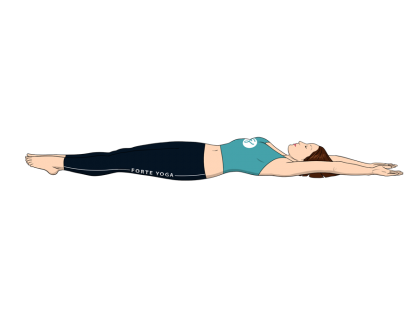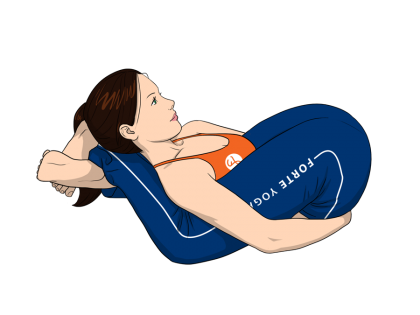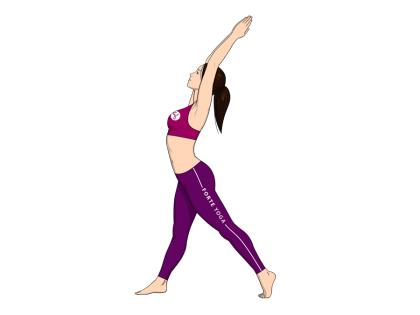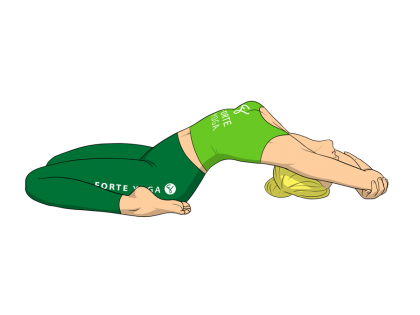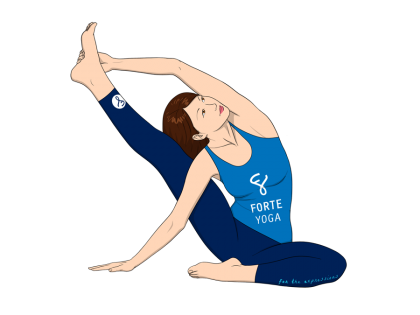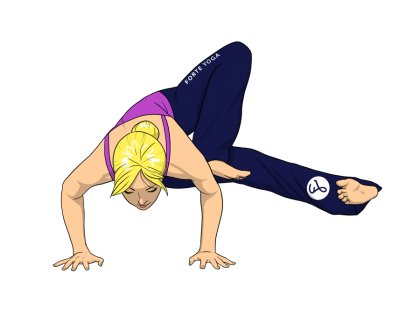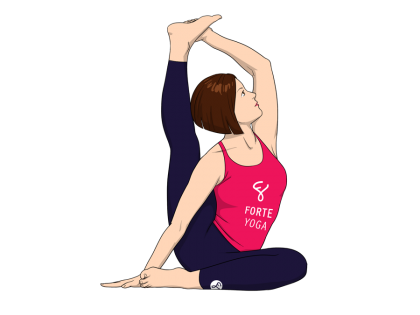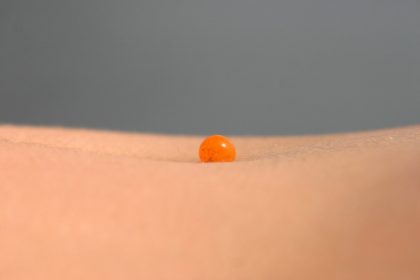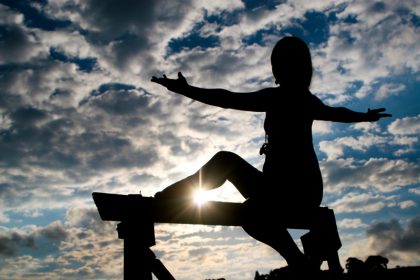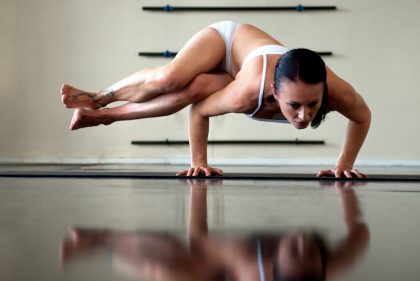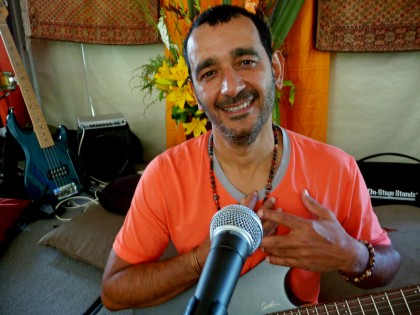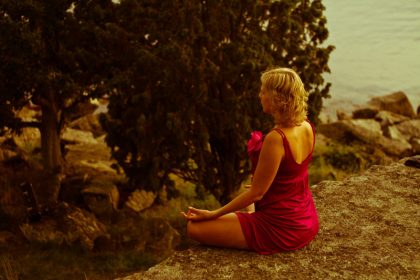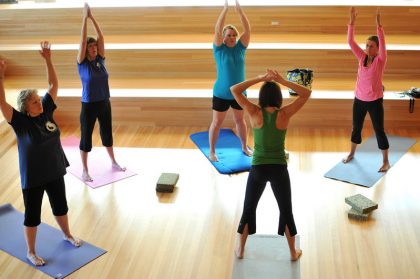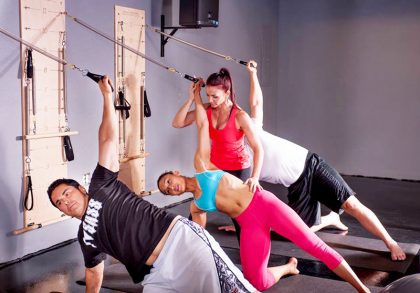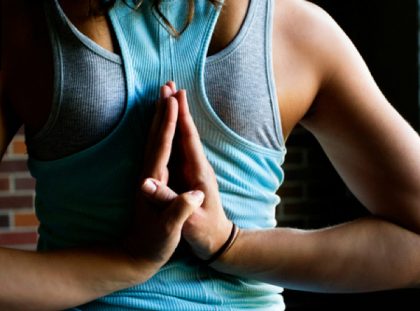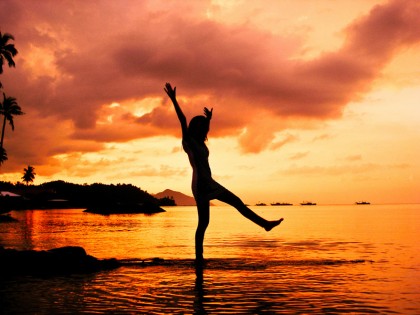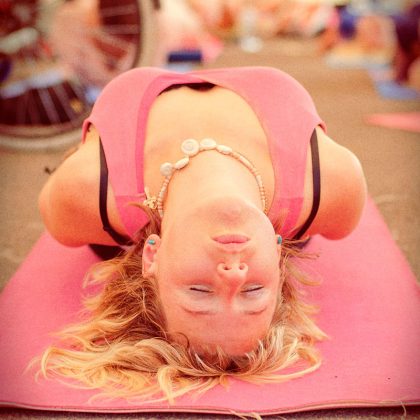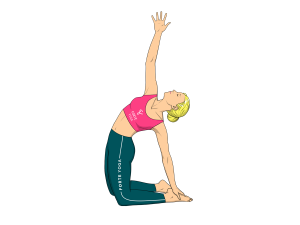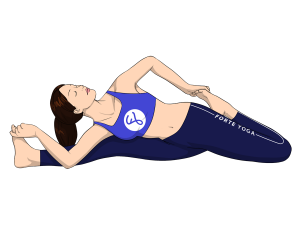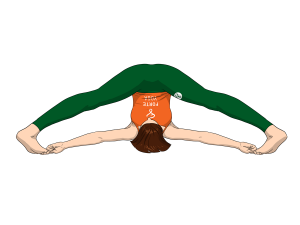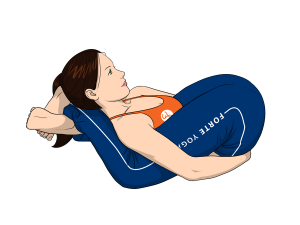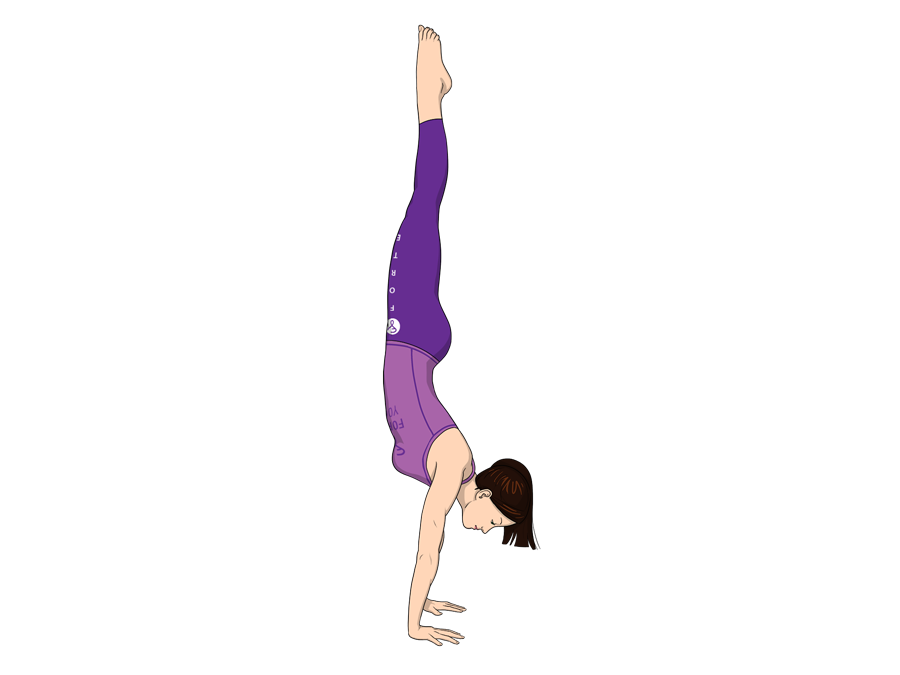
Handstand Yoga Pose is an arm balance, inversion pose that targets the shoulders and is ideal for yogis and yoginis at an advanced level.
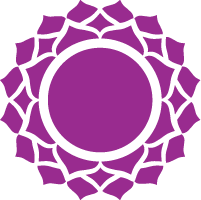 sahasrara – the crown chakra
sahasrara – the crown chakra[yoga-sharrre]
- Start by bringing yourself into Downward Facing Dog (Adho Mukha Svanasana), positioning yourself 2-4 inches away from the wall (more experienced practitioners may feel comfortable without a wall nearby). Your hands should be placed shoulder-width apart, fingers facing forward, and your spine and legs should be nice and straight to form an upside-down V-shape. Before moving on, really ground your Downward Facing Dog. Moving into the handstand is the most unnerving part of this position, so developing a strong starting base is important.
- Once you’re ready to move on, begin walking your feet closer to your hands. Resist the urge to bring your head in closer to the wall; make sure to keep your chest in the same position, actively pulling it away from the wall as you walk forward. Don’t bring your feet in so close that you’re unstable but just enough that you feel your hands develop a strong root to the ground.
- Bring one foot in slightly closer, bending the knee. This foot will be the one that helps launch you into the handstand position, so feel out which one you’re more comfortable with. Keep your other leg extended and active, but transfer your weight to the foot of your bent leg. Lifting your extended leg slightly to bring your toes off the ground, hop lightly a few times to prepare yourself for the handstand. Sweep your extended leg straight up, using your bent leg to initiate the launch, before immediately sweeping and extending the bent leg. Legs should be extended and together, bottoms of the feet facing the ceiling. Really work your core abdominal muscles to help lift your hips above your head and shoulders. Most likely, you will be unable to keep both legs up the first few times you attempt to kick your legs up. Maybe not today, but if you continue to hop and kick your legs up like this you will be able to move into the full handstand.
- Once you have kicked both of your legs up into the full handstand, start by trying to hold the pose for 10-15 seconds, taking deep, controlled breaths, until you can work up to a full 60 seconds. When coming out of the pose, try to sweep both legs down, one after another, without bending the back or legs. This will help prevent you from shifting your weight onto your shoulders and neck.
- Breathe deeply through each step.
- If just starting out, try the position with your hands about 2-4 inches away from the wall in Downward Facing Dog. Having the wall nearby will prevent you from kicking yourself over completely and can serve as a guideline for leg placement. Your heels may hit the wall at first, but eventually you will be able to kick them up lightly.
- This position will take time to master! Take it slow; it’s okay if all you can manage are a few hops for your first tries.
Fear is often the biggest factor that prevents people from doing the handstand. Start slowly when trying out this move, making sure you are physically and mentally comfortable with launching into a full, unsupported handstand. The last thing you need is to get halfway through and then buckle from fear or insecurity, which can lead to injury.
By placing a bolster against the wall between your hands when in Downward Facing Dog, you can create a cushion between your head and the wall that will provide you with more support to lift from.
All Muscles: Biceps, triceps, shoulders, back, chest, abs
Target Muscles: Shoulders
- Regular practice can strengthen the brain, legs, spine, lungs and wrists.
- Improves balance and concentration.
- May reduce stress, anxiety and mild depression.

